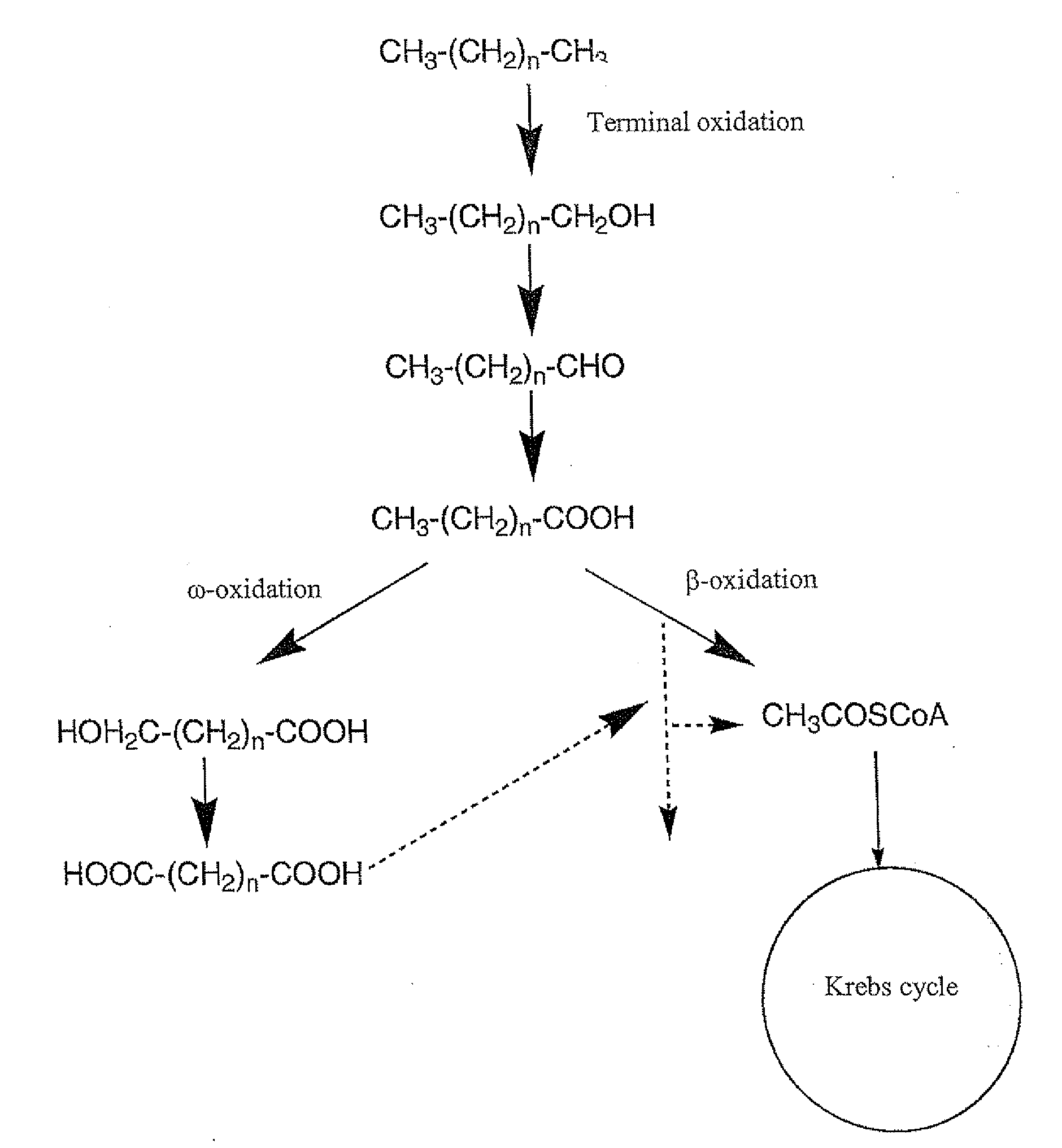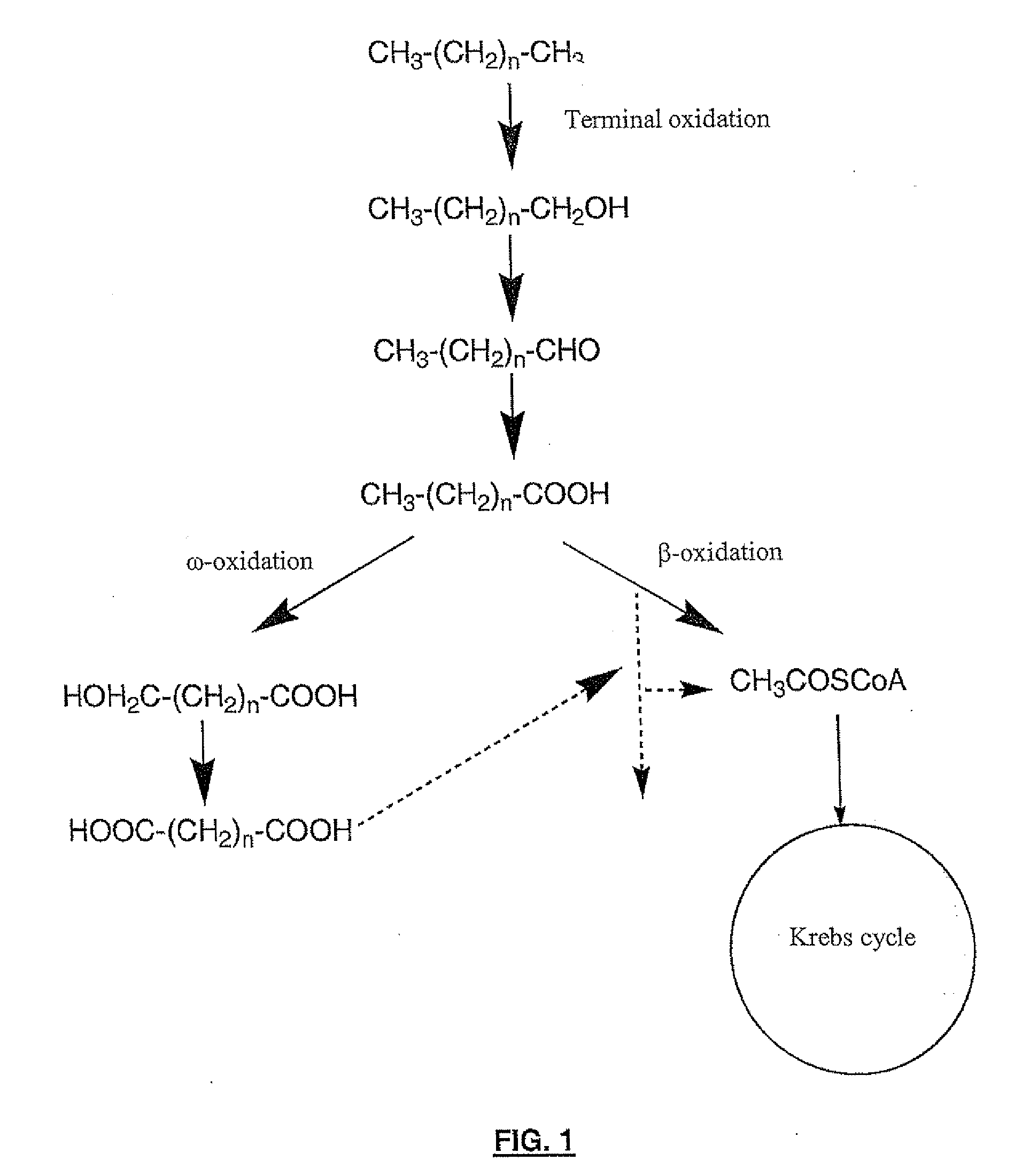Production of dicarboxylic acids by improved mutant strains of yarrowia lipolytica
a technology of yarrowia lipolytica and mutant strains, which is applied in the field of producing dicarboxylic acids by fermentation, can solve the problems of possible reversion and the inability to completely stabilize the mutants produced according to a multi-copy amplification system, and achieves the effects of high inducibility, non-reversion, and efficient production
- Summary
- Abstract
- Description
- Claims
- Application Information
AI Technical Summary
Benefits of technology
Problems solved by technology
Method used
Image
Examples
example 1
Method of Producing Dicarboxylic Acids from Oleic Sunflower Oil with Mutant MTLY37
[0086]A preculture of mutant MTLY37, kept in a gelosed medium of composition: yeast extract 10 g·l−1, peptone 10 g·l−1, glucose 10 g·l−1, Agar 20 g·l−1, is carried out by means of a seeding that provides an initial absorbance of the preculture medium close to 0.30. The preculture is performed under orbital stirring (200 rpm) for 24 h at 30° C. in a 500-ml flanged flask containing 25 ml of medium (10 g·l−1 yeast extract, 10 g·l−1 peptone, 20 g·l−1 glucose).
[0087]The medium used for culture is made up of deionized water, 10 g·l−1 yeast extract, 20 g·l−1 tryptone, 40 g·l−1 glucose and 30 g·l−1 oleic sunflower oil.
[0088]Seeding of the fermenter is achieved with all of the preculture flask.
[0089]Culture is carried out at 30° C. in a 4-l fermenter with 2 l medium at an aeration rate of 0.5 vvm and a stirring speed of 800 rpm provided by a double-acting centripetal turbine.
[0090]After 17 hours culture, as soo...
example 2
[0094]Example 1 is repeated by replacing, in the culture medium, the tryptone by peptone at the same concentration. After 130 h culture, 9.9 g·l−1 dicarboxylic acids are obtained, i.e. a production increase of about 68% in relation to Example 1.
example 3
Production of Dicarboxylic Acids by Mutant MTLY37 with Continuous Oleic Sunflower Oil Supply
[0095]Example 2 is repeated, the oleic sunflower oil being removed from the culture medium and replaced by continuous injection of this oil at a sublimiting flow of 1 ml in the reactor.
[0096]Under such conditions, 14.7 g·l−1 dicarboxylic acids are produced in the culture medium after 130 h.
PUM
| Property | Measurement | Unit |
|---|---|---|
| Fraction | aaaaa | aaaaa |
Abstract
Description
Claims
Application Information
 Login to View More
Login to View More - R&D
- Intellectual Property
- Life Sciences
- Materials
- Tech Scout
- Unparalleled Data Quality
- Higher Quality Content
- 60% Fewer Hallucinations
Browse by: Latest US Patents, China's latest patents, Technical Efficacy Thesaurus, Application Domain, Technology Topic, Popular Technical Reports.
© 2025 PatSnap. All rights reserved.Legal|Privacy policy|Modern Slavery Act Transparency Statement|Sitemap|About US| Contact US: help@patsnap.com


